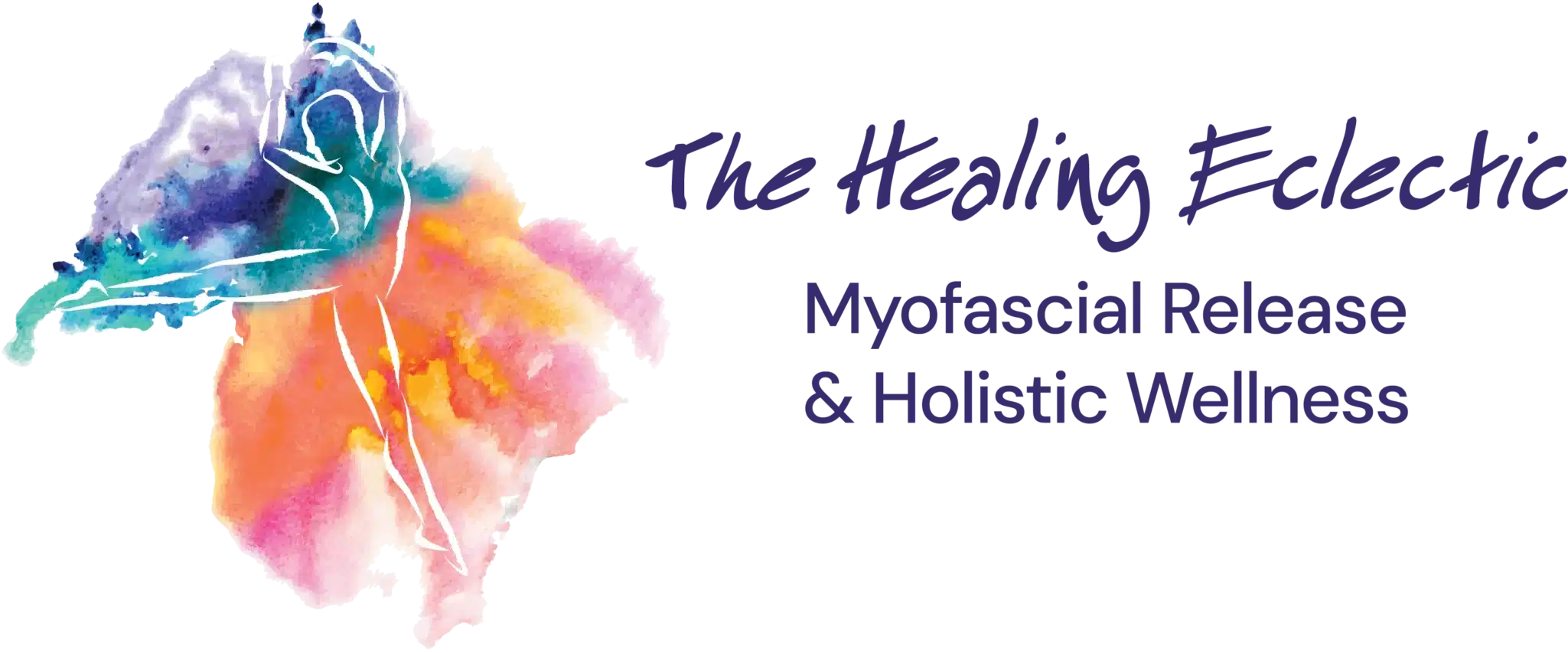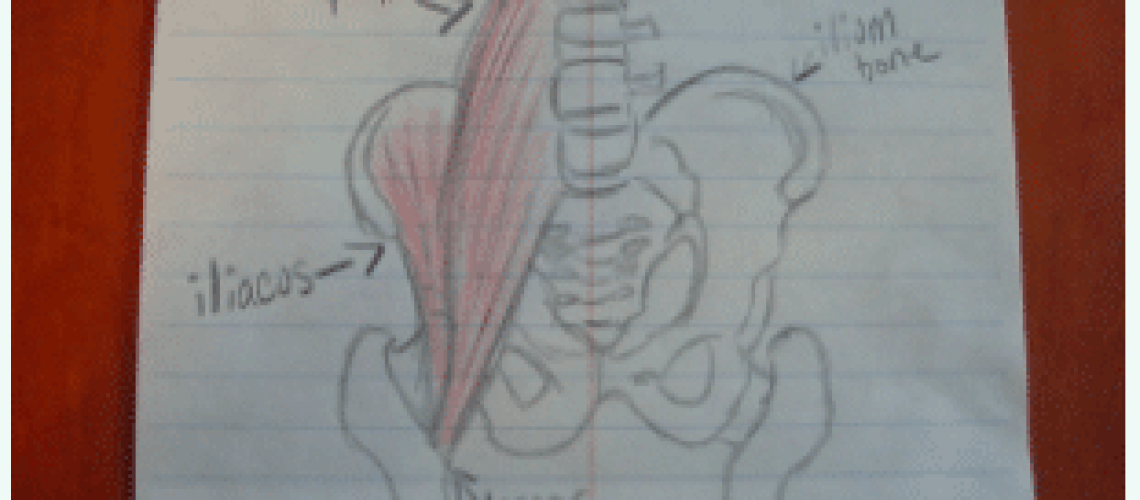Illustration by Heather Fraelick
Uncovering the Mysteries of the Illiopsoas Muscle
The illiopsoas muscle is making a name for itself in many sessions as of late and I am writing this article to share some more information on it in an effort to shed light on what it is, where it is located in the body and why it is an important muscle to address in session with regard to certain ailments such as low back pain.
First of all, the illiopsoas muscle is not just one muscle, it’s actually two. The illiacus is one muscle and the psoas major is the other muscle that make up the illiopsoas. The reason why they are often referred to as one muscle is because they share the same tendon that attaches into the lesser trochanter of the femur bone. In layman’s terms, the inside of the thigh bone.
To go into further anatomical depth, the psoas major originates from the vertebrae T-12 through L-5 and runs anterior (in front of) the ilium bone (part of the pelvic girdle) and inserts into the lessor trochanter of the femur (as stated above). The psoas major is the deepest muscle in the human body and is the only muscle that connects our upper body to our lower body. Wow! Let me repeat that, it is the ONLY muscle that connects our upper body to our lower body! What a load of responsibility this muscle has! It sounds heavy, however if we learn to work with this muscle and help it stay healthy, it can also bring about much satisfaction with how we feel in our body. More on that later.
The illiacus muscle originates at the entire surface of the internal iliac fossa (the anterior portion of the ilium bone mentioned above) and the inferior (lower) portion of the muscle has fibers that connect with those of the psoas and then insert into the lessor trochanter of the femur. While the illiacus muscle isn’t the deepest muscle or only muscle to connect our upper and lower body, it is still important to keep in good health due to its direct relationship to the psoas major.
What does the illiopsoas muscle do? It stabilizes the trunk of our bodies, keeping us upright. It flexes our trunk so we can stretch our upper bodies over our legs and it flexes our hip to our chest so we can (for example) lift our legs to walk. The positioning of the illiopsoas helps to create a cradle for our internal organs. If the posas is out of alignment, this will affect organ placement and thus disrupt organ function.
Also, I learned from reading, The Psoas Book, by Liz Koch that the psoas muscle has a direct link to the reptilian brain which governs our fight and flight response in the body. Because of this, it is the first muscle to contract when the fight and flight response is in place. And while we are most likely not running away from bears who are about to eat us in our modern day society, stress acts out in a fight and flight matter. So no matter if it’s an internal or external stimulus activating fight or flight, the psoas muscle will contract if the brain signals it to.
When this muscle is in a state of contraction, it can pull at the lumbar vertebrae and thus create discomfort that is usually felt in the low back. Releasing the illiopsoas muscle can provide tremendous relief for low back pain. On that note, some people see me who are experiencing “tension deep within the front the hip”. What could be a cause of this? You guessed it, the illiopsoas! Some other ailments that the illiopsoas can contribute to are the following: sciatica, scoliosis, hip pain, SI joint misalignment, knee pain and it can even contribute to menstrual cramping during a woman’s monthly.
If you suspect the illiopsoas is causing discomfort, feel free to share with me at your next session and we can address it to see if there’s tension there. In the meantime, feel free to play with a runner’s lunge stretch or Warrior 1 (for those of you who practice yoga!) to help release the muscle through stretch.


 Hi there. My name is Heather Fraelick. I am a lover of life, movement and witnessing others feeling empowered. I am a dancer, a traveler, a teacher, a women’s circle facilitator, a life long student and more. I believe in life and the authentic healing that can happen when we actually slow down and feel what our bodies are trying to tell us. Welcome to my site.
Hi there. My name is Heather Fraelick. I am a lover of life, movement and witnessing others feeling empowered. I am a dancer, a traveler, a teacher, a women’s circle facilitator, a life long student and more. I believe in life and the authentic healing that can happen when we actually slow down and feel what our bodies are trying to tell us. Welcome to my site.